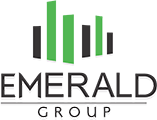Efficiency versus productivity
Estimating a construction project for bidding is a task that requires a multitude of skills. Cost estimating skills are the top competencies that good estimators have to master. To be a great estimator, one needs to go beyond productivity and become efficient at cost estimating. When asked what they do for a living, most people answer an estimator, carpenter, project manager, etc. The best response is: my job is to make money for the company I work for. A few markers allow us to examine efficiency versus productivity when we analyze estimating a construction project for increased profits.
Planning the cost estimating activities.
A well-run construction company has a cost-estimating procedure in place which explains each step that needs to be performed, the sequence and “what-if” scenarios for variations. Planning the cost estimating activities allows us to complete the cost estimate on time and achieve a higher degree of accuracy. When we do not allocate the proper time and resources to complete a cost estimate, the confidence level achieved at the review time is not optimized for maximum profit analysis. In my experience, the most damaging for completing a cost estimate is the rush that occurs when approaching the bid closing time. When the cost estimator is not able to anticipate the what-if scenarios at closing time, panic can take over, the management loses confidence, and the profit/markup is increased to cover the potential risk.
With the proper planning in place and the what-if scenarios covered, the cost estimate review becomes a time when the review group can optimize the profit allocation and analysis. Thus, the difference between being a productive cost estimator, able to close a high number of bids per month, for example, versus an efficient one who is able to close the same number of bids per month but with increased profitability potential for each project.
Efficient communication.
Lack of communication inhibits efficiency and productivity. Communication for best cost-estimating results is crucial for the outcome of the cost estimate. A cost estimator, to be efficient, needs to interact with other professionals within the company for the best results. Experience showed me that when a communication plan is part of the overall cost estimate development plan, the quality of the cost estimate is increased by a very high margin.
Acknowledge problems and find the solution.
Even the best planning and communication would not eliminate the potential for problems during the development of a cost estimate. The best approach is to identify the problem as soon as it arises and find a solution. If need be, the cost estimator can escalate the issue with management to find and agree on the best approach. An easy example is what to do if a certain scope of the project does not have proper sub-contractor-confirmed coverage. The cost estimator can assess the situation and present it to management for review and a proposed approach.
Frustration.
It is not uncommon for professionals working as cost estimators to become frustrated. This usually happens when there is a lack of proper resources and tools. Issues out of our control also irritate us and have an impact on our ability to perform efficiently. A great construction company is focused on providing and updating the resources needed for cost estimators. Cost estimating software, work management applications, and communication tools are just a few examples.
The most important aspect of a cost estimator’s work is to have the resources to plan properly, implement and track the required activities for the completion of a cost estimate. Employers who take the initiative to reduce employees’ irritations and emphasize procedures that increase efficiency will reap the benefits of happier employees and increased profits for the company.
Estimating for Profit
Besides project costs, the cost estimator must include the markup on each bid. The calculation of markup varies from contractor to contractor. The common denominators are gross and net profit. Understanding the difference is crucial and allows contractors to stay competitive within their market while running a profitable business.
- Overhead. The overhead costs are defined as all the “soft” costs incurred by being in business and are not associated with any particular project. Examples are office expenses, trucks, storage, training, legal, insurance, advertising and marketing. Not all companies calculate the overhead the same way. Some consider the labour burden overhead, while others consider it a direct cost. Some companies assign an overhead amount based on the time it takes to do the job rather than the cost of the job. Other companies consider a fee for construction management in place of profit. Regardless of the method used, the goal is that there is enough money to cover the business costs. The remaining net profit is commensurate with the risk taken on each project and allows for further investments in the company assets and employee compensation programs. The overhead costs are very particular about each company and the business approach philosophy. Larger companies have higher overhead costs compared to smaller ones. The size of the company is also a criterion for bidding on particular project sizes. During slow economic periods, it is not unusual to see a mixed bag of competitors within a market niche. Larger companies will start looking at projects which, under other circumstances, would be of interest only to medium and small contractors.
- Profit. The number of interest is the net profit. It is common practice in construction that a company will mark up a bid with a value to achieve a specific margin (gross profit). To calculate the markup amount required to achieve a specific margin, we apply the following formula: Job Costs + Markup = Total Price; Markup / Total Price = Margin.
The gross profit assigned to a bid is influenced by a multitude of factors:
- The overall economic climate. During good economic times, contractors can afford to bid on more projects, be very selective about the type of projects and choose a higher markup amount. It is a balancing act: how to still be competitive and simultaneously take advantage of the good economy to be more efficient and allocate funds for asset building.
- The short and long-term business plan each company has established. If the company is focused on asset building and growth, the markup amount will be higher.
- The risk associated with the project. If a project is high-risk, the markup is higher. It compensates the contractor for taking the risk if things go well or covers the costs if the risk is encountered.
Performing the cost estimating activities in an efficient manner and assigning the appropriate margin will significantly increase the successful completion of projects and company profitability.
Please leave your comments in the comments area. All feedback is very much appreciated!





